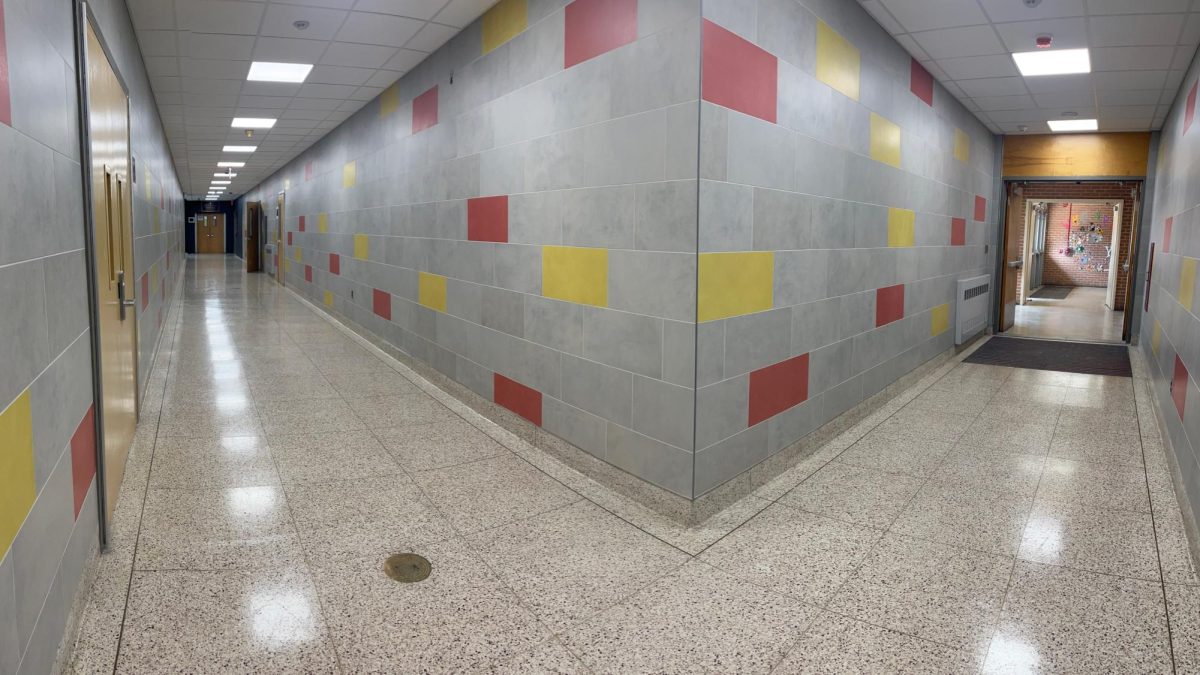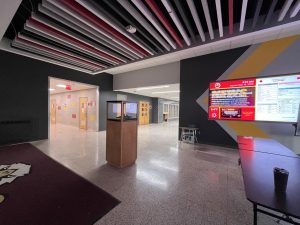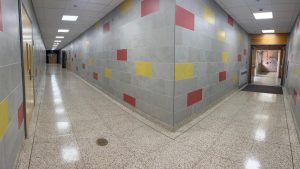Shifting Schedules
Middle Schools Switch From A/B to Semester Schedule
The change from AB to semester based electives and languages.
April 25, 2023
In August of 2022, middle school students were astonished to see their schedule change after many years of having the traditional “A/B Day” schedule.
Previously, middle schools had an A/B Day schedule, in which students’ elective and language would alternate. In other words, on A days, students would have their elective or language. Then on B days, students would have their other course.
However, the 2022-2023 school year introduced a different scheduling format: the semester schedule. The school year would be divided into two semesters, each semester covering two marking periods. Rather than students alternating their elective based on the A/B schedule, students would have one elective or language for half the year and then their other course for the other half. In a similar vein, high school students are permitted to enroll in two courses worth 2.5 credits each, one of which may be taken during the first two marking periods and the other during the last two at any time in a student’s high school career.
Students have expressed their opinions for this change, with many voicing their disagreement with the change.
“It’s so much more convenient to have the A/B schedule because you don’t get bored and you’re constantly practicing skills for both your electives. I’m not sure why they made the switch,” said Herbert Hoover Middle School (HHMS) 8th grader, Avanti Sudarsan ‘27.
Students also stated issues such as a lack of time in preparing for their electives and language class has increased anxiety. Such anxiety occurs from the decreased amount of time to prepare for tests and a more crowded schedule. Students note the flexibility and additional time given to prepare for these courses with the older A/B schedule.
“The ideal A/B schedule was one that took place in 2021–2022. On A days, I had technical education, and on B days, Spanish. When I had tests in both subjects, I didn’t feel anxious at all because I would prepare for one the day before, and then after the test, I would prepare for the next,” said Thomas Jefferson Middle School (TJMS) 8th grader Syed Ali ‘27. “ The same was true of tests, quizzes, and homework. I was not as affected by it as I had anticipated. There will now be two marking periods for each pair of electives you take instead of the previous continuing period.” With regard to the change, middle school music programs have to adjust to teaching in a shorter time period while hoping students can retain the skills for a sustained period of time.
“I had to be taken out weekly during class to practice with my teacher the semester I didn’t have an orchestra,” 8th grader Vaishnavi Bhatt ’27 from HHMS said. “I’m lucky I have orchestra the 2nd semester because it would be so much harder to retain skills going into high school and the summer.” Bhatt prefers having the elective in the 2nd half of the year. However, Bhatt wishes that the A/B schedule remained in place so that students would not need worry that by chance they didn’t have a certain elective in the 2nd half of the year.
“Playing an instrument is a year-round activity; it is not seasonal like a sport. Many students often struggle a little in the beginning of the school year from having no musical instruction during the summer. Adding an additional half-school year with very limited music instruction (once a week pullout lesson) definitely adds to students’ struggles,” said Mr. Joseph Cunningham, band director of HHMS.
Specifically, at HHMS, the administration and guidance department worked to put all students in 7th and 8th grade band in the second semester, so that music students all receive lessons and instruction throughout the second half of the school year. Benefits have emerged from this choice.
“Although only having band instruction once a week in semester 1 lead to those students having more limited music skills, hence the band playing easier, shorter pieces in the winter concert; these students, now having band everyday now in the 2nd semester have improved greatly so far, hence the group being able to tackle longer and more challenging pieces of music in this semester,” said Cunningham.
Along with many students, middle school teachers agree that the new schedule makes it harder for them to know if their students are well-prepared for the high school curriculum, especially for language. Currently, language teachers have not had enough time to develop a plan of action to address this schedule change.
“I do love to see the students on a daily basis, as it helps to make better connections. However, in terms of the language I believe it puts the students at a disadvantage as the gap between the time they will be exposed to the language again can range from 2 months to 12 months making it harder for them to recall and retain the information,” said TJMS Spanish teacher Señora Claudia Vergara.
In 6th and 7th grade, students have two periods of English. This means that their language and elective are split using the semester schedule. For 8th graders, if students were placed in accelerated English, they would have their language daily, similar to an academic class. This course is deemed as the “accelerated language class” in middle schools, which puts these students at an advantage for being placed in an honors course for their language in high school. Students can choose two electives, which will be based on the semester schedule.
For the rest of the student body, if students had their language the first two marking periods, there would be an eight month gap between the next time they would have that class. However, depending on their schedule for the next school year, there could be a two to nine month gap which puts students at a disadvantage in terms of remembering what they learned almost a year ago. After a long, relaxed summer, students struggle to retain and apply skills from the previous school year. Adding another 5 months full of schoolwork and stress further adds to the struggle of retaining skills, stunting a student’s academic progress.
The concern over losing half a year of language puts 8th grade non-accelerated students at an academic disadvantage.
“Having a language class on alternate days allows for constant practice and remember important components” said Sharmithaa Bhavani Maheshswaran ‘26, “If I didn’t have my language for half a year, I don’t think I would be placed in an honors course because of the scheduling. It puts those who want to move up levels at a disadvantage.”
While this change directly affects middle school students, the impacts will be felt at EHS when these middle schoolers enter the school next year.
“This schedule will not only affect middle school students learning their languages and practicing electives, but also impact their adjustment to high school. I think teachers will definitely have to spend more time reteaching topics taught in middle school because we simply did not have the proper means to retain it,” said Noelle Wilson ‘27, an 8th grade student at HHMS.
The high school teachers explain actions they must take to accommodate their lesson plans and help the incoming students reclaim the necessary skills and accommodate for this learning curve.
“Students having a full-time language class in seventh and eighth grade will put them at a higher advantage and level when they come into high school so that they can achieve an even higher level when they graduate. I do think that language is one of those things that if you don’t use it, you tend to lose it,” said Senora Panepinto, Spanish teacher at EHS. “Hopefully, the students will be given resources at the end of their first semester that would give them practice during the other semester.”
“The beginning of the year is always a bit rough for the freshmen because the students are at different levels. While I’m sure the next batch of students will be able to adapt, I have to understand the extra struggle and be sure to accommodate to that,” said Mr. Marc Denicuolo, band director at EHS.



























































































